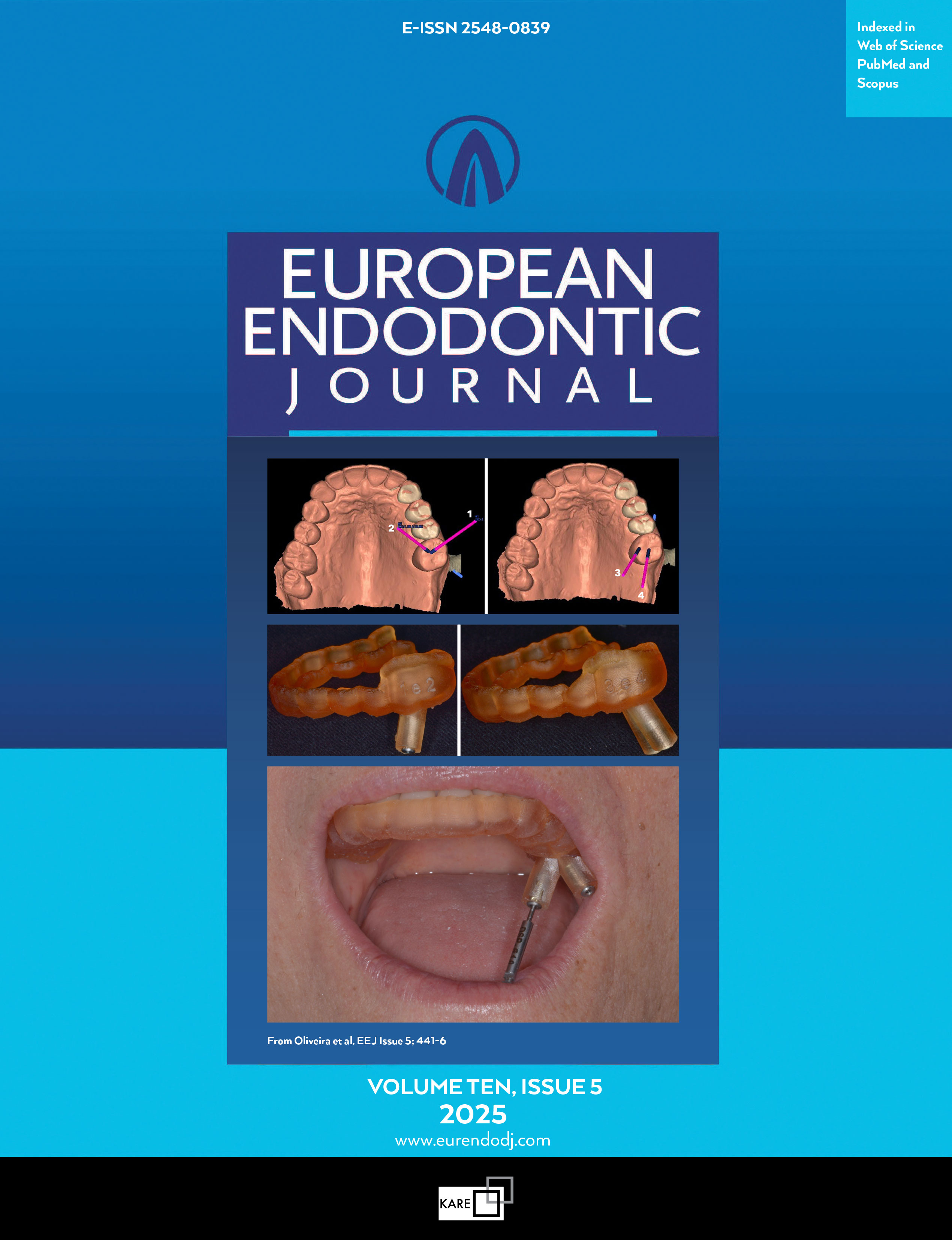Metrics
2024 IMPACT FACTOR
5 year Impact Factor
Eigenfactor Score
2024 CiteScore
Journal Citation Reports
(Clarivate 2025, JIF Rank)
The Effectiveness of Chelating Solutions and Photodynamic Therapy in Inactivating Bacterial Lipopolysaccharides During Endodontic Therapy
Denise Oda1, Mirela Cesar Barros1, Talita Tartari2, Felipe Eduardo de Oliveira Silva3, Christiane Becari Ribeiro4, Luciane Oliveira3, Flaviana Andrade11Department of Dentistry, Endodontics and Dental Materials, Bauru School of Dentistry, University of São Paulo, Bauru, São Paulo, Brazil2Department of Restorative Dentistry, Division of Endodontics, Piracicaba School of Dentistry, State University of Campinas, Piracicaba, São Paulo, Brazil
3Department of Biosciences and Oral Diagnosis, São Paulo State University, Institute of Science and Technology, São José dos Campos, São Paulo, Brazil
4Department of Biological Science, Bauru School of Dentistry, University of São Paulo, Bauru, São Paulo, Brazil
Objective: The purpose of this study was to evaluate the influence effects of different endodontic treatments , such as chelation ng solutions and antimicrobial photodynamic therapy (aPDT), on the rreductionng the amount of endotoxin levels in root canals.
Methods: Eighty human single-rooted teeth had their crowns sectioned, and the root canals were prepared. All samples and materials were sterilized using Cobalt-60 irradiation. Subsequently, 10 µL of fresh lipopolysaccharide (LPS) was inoculated into the root canals and incubated for 3 days. On the fourth day, experimental treatments were applied to the root canals according to the groups (n=10): [1] pyrogen-free water, [2] 0.005% methylene blue, [3] diode LASER, and [4] 0.005% methylene blue + diode LASER (PDT), [5] 2.5% sodium hypochlorite, [6] 17% trisodium ethylenediaminetetraacetic acid (EDTA), [7] 10% tetrasodium EDTA, [8] 18% etidronate (HEBP). The exposure time for each solution and light irradiation was 5 minutes. The samples collected after treatment were analyzed using the Limulus Amebocyte Lysate test to quantify endotoxins. The data obtained were subjected to Kruskal-Wallis analysis followed by Dunns test.
Results: All treatments demonstrated efficacy in reducing endotoxin levels in root canals compared to the use of pyrogen-free water (control). A statistically significant reduction was observed in the groups treated with 17% EDTA and 18% HEBP compared to the control group.
Conclusion: Short-term application (5 minutes) of 17% EDTA and 18% HEBP chelating solutions significantly reduced LPS in root canals and may be effective adjuncts in endodontic therapy. (EEJ-2025-03-032)
Manuscript Language: English


